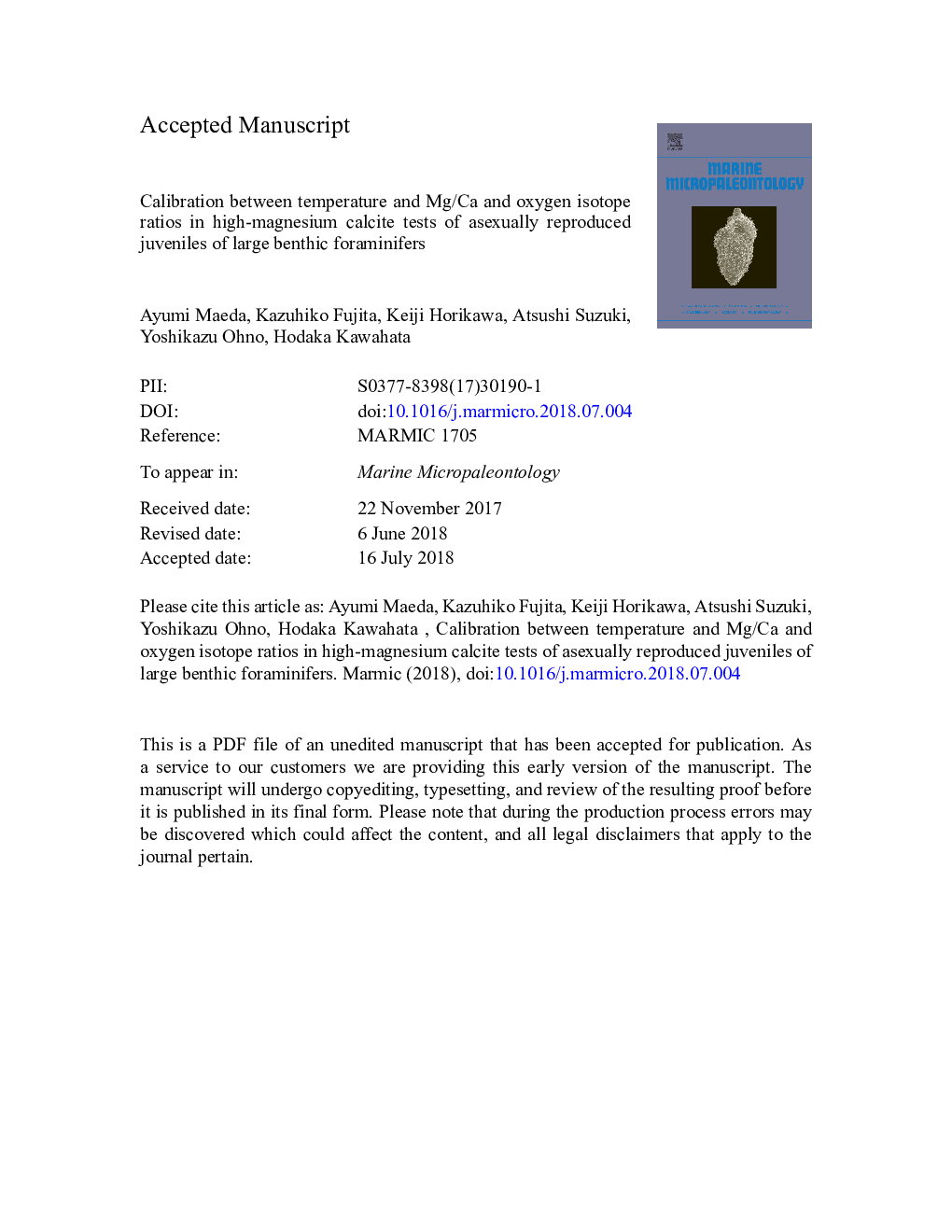| Article ID | Journal | Published Year | Pages | File Type |
|---|---|---|---|---|
| 8916482 | Marine Micropaleontology | 2018 | 32 Pages |
Abstract
Mg/Ca ratios and oxygen isotope ratios (δ18O) in biogenic highâmagnesium calcite tests precipitated by reef-dwelling large benthic foraminifers can be used as paleotemperature proxies because they correlated well with the temperature of seawater. However, it is still unclear whether there is an interspecies difference in temperature correlation among several perforate and imperforate species. We used four species of large benthic foraminifers to perform culture experiments at controlled temperatures (21-31â¯Â°C). Neorotalia calcar, Baculogypsina sphaerulata, and Calcarina gaudichaudii were selected as the perforate species, whereas Amphisorus kudakajimensis was chosen as the imperforate species. The data obtained by analyses suggest linear relations between Mg/Ca and temperature except at 31â¯Â°C, and also in the case of A. kudakajimensis except at 29â¯Â°C, which is likely caused by thermal stress resulting in metabolic anomaly in the foraminifers. Furthermore, A. kudakajimensis (imperforate species) had a different Mg/Ca-temperature equation form those of perforate species. The combined Mg/Ca-temperature and δ18O-temperature equations are yielded using the least square method as follows: Mg/Caâ¯=â¯2.73â¯Tâ¯+â¯74.7 for three perforate species, which is applicable to a temperature range between 21â¯Â°C to 30â¯Â°C. The temperature relation of δ18O is different even among perforate species. We observed that the δ18O values were closer to the equilibrium of pure calcite than those of highâmagnesium calcite. The δ18O-temperature (T) equations are yielded using the least square method as follows: Tâ¯=â¯15.1-6.17 (δ18Ocâ¯ââ¯Î´18Osw) for C. gaudichaudii, Tâ¯=â¯17.7-5.14 (δ18Ocâ¯ââ¯Î´18Osw) for N. calcar, and Tâ¯=â¯16.1-5.10 (δ18Ocâ¯-â¯Î´18Osw) for B. sphaerulata. A species-specific calibration is necessary for the relation between δ18O and temperature. As long as the optimum temperature range is the same, foraminifers belonging to the Calcarinidae show the same Mg/Ca-temperature relationship.
Related Topics
Physical Sciences and Engineering
Earth and Planetary Sciences
Palaeontology
Authors
Ayumi Maeda, Kazuhiko Fujita, Keiji Horikawa, Atsushi Suzuki, Yoshikazu Ohno, Hodaka Kawahata,
